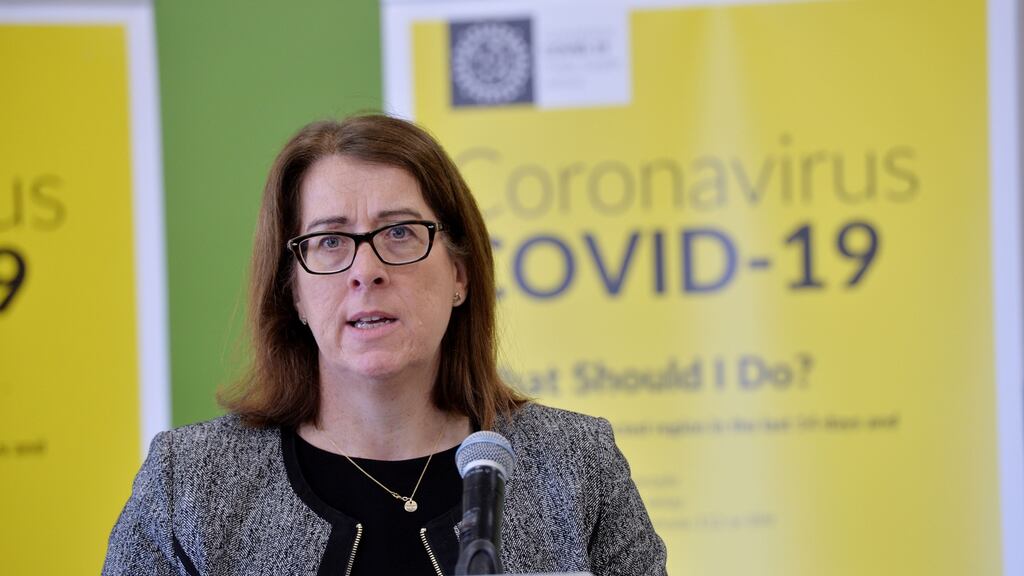The number of patients attending hospital emergency departments (EDs) has fallen sharply during Level 5 restrictions, prompting fears among health bosses that people might be missing out on necessary care.
Attendances at EDs fell 6.5 per cent last week, while admissions fell almost 10 per cent, compared to the previous week, according to HSE chief operations officer Anne O’Connor.
Attendances are down over 15 per cent and admissions are down 13 per cent on the same time last year, she said.
Hospital Report
Linking the fall in patient numbers to the current restrictions, she said “we’re heading back down to where we were in May” during the first lockdown.
Ms O’Connor said all services were open and she urged people to attend hospital if they were in need of treatment.
Trolley numbers, currently averaging 140 each day, are also significantly lower than they were at this time last year.
Lower attendances have helped ease pressure on hospitals, where currently there are 410 free beds, she said.
“We’d have a concern about people not attending for urgent care. Please come forward if you need it; our hospitals are open for services,” said HSE chief executive Paul Reid.
Officials said there has been a fall in prostate cancer patients attending but not in relation to lung and breast cancer.
Ireland is one of only two countries in Europe with a declining incidence of Covid-19, HSE chief clinical officer Dr Colm Henry told the weekly HSE briefing.
The 14-day incidence of the disease has fallen to 213 cases per 100,000 people, the number of outbreaks fell by 200 last week to 480 and the positivity rate of Covid-19 tests has fallen to 4.7 per cent, he pointed out. There were also signs of a “steadying” of hospital and ICU admissions and a reduction in cases in all age groups.
However, easing back too quickly on restrictions could lead to a rapid deterioration of the situation with the virus “as we know to our cost”, he said.
With case numbers, positivity and the number of contacts linked to each case falling, Mr Reid described current trends as “quite encouraging” and hospital numbers as “stable, at best”.
However these positive trends meant it was even more incumbent on everyone to sustain the current huge effort into the coming weeks.
The situation with Covid-19 was always fragile and prone to rapid change, so “in short time we could find ourselves dealing with the same trends we’re now seeing in the rest of Europe”.
He urged the public not to “drop your guard” and to “keep your resolve and resilience”. Employers should make every efforts to ensure staff can work at home unless needed for essential services.
Acute hospital services are down only 5-6 per cent on last year as most work has been ramped up again after the spring lockdown, Ms O’Connor said.
Daycase work is down 15 per cent at present but outpatient activity is only 2 per cent down.
Globally, activity is down 40 per cent since the start of the year, and Ms O’Connor said the health service would not be able to catch up on this lost activity.





